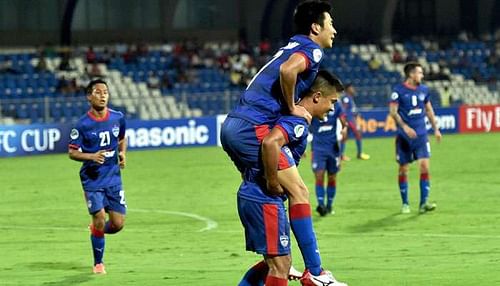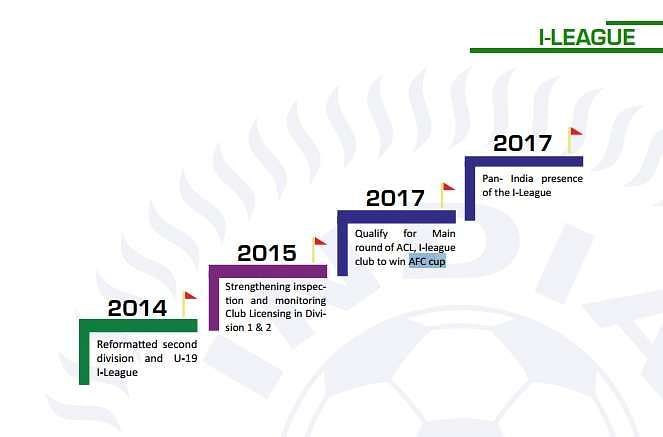
AFC Cup 2016: Decoding Bengaluru FC's 2016 AFC Cup Quest and what it means for Indian football
The AFC Cup, an annual international association football competition between domestic clubs run by the Asian Football Confederation (AFC) was started in the year 2004.
In order to develop a blueprint for the development of football in Asia, the AFC in one of its ‘Vision Documents’ listed out a few emerging football nations. And for these "developing" national associations, the AFC Cup was started.
The intention was to give these clubs from developing countries a chance to compete on a continental scale on an even playing field. Hence, one of the key reasons for the creation of this new competition was to reduce the number of morale-crushing one-sided demolitions of clubs by the big guns of Asia. Teams who are more prolific in the Asian region play the more prestigious AFC Champions League.
Also read: Also read: Bengaluru FC's call for support ahead of AFC Cup semi-final leaked on social media
The 22nd of September 2016 was an exciting day for Indian football fanatics. A mere 3-year-old I-League club Bengaluru FC became only the third Indian club after Dempo and Mohun Bagan to reach the semi-finals of the AFC Cup after they were held to a goalless draw by Singapore club Tampines Rovers in the quarter-finals of the 2016 edition.
Bengaluru now had a bigger challenge in front of them in the semi-finals as they were up against the defending champions Johor Darul Ta'zim from Malaysia.
There was, however, a very dim fizzle about the club from Bengaluru making it so big in the Asian circuit.
India at the AFC Cup 2016
The 13th edition saw the participation of 40 teams from 23 associations, wherein, I-League winners Mohun Bagan and Federation Cup champions Bengaluru FC represented India.
Pitched in Group G, Mohun Bagan topped the group to qualify for the knockout stages, while Bengaluru FC finished second in Group H, some 9 points behind group leaders Johor Darul Ta'zim to qualify for the next round. The Malaysian team was undefeated in the group stages and amassed the maximum points available.
In the Round of 16, Tampines Rovers ousted Mohun Bagan 2-1 leaving Bengaluru the only Indian contention in the league. The buzz around that time was that the quarter-final round of the AFC Cup will be around the Indian Super League (ISL) time, and both the I-League clubs might not have all players available to play the next round.
Bengaluru’s Achievement
While most people began focussing on the ISL, Bengaluru had other plans. Standing strong, Bengaluru achieved something which is undoubtedly the best thing that might have happened to Indian club football in recent times. They not only held back their players for the tournament but also managed to pull off an impressive 1-1 draw away at Johor Darul Ta'zim.
And on Wednesday, 19th October 2016, Bengaluru FC created history by beating the defending champions 3-1 (aggregate 4-2) and becoming the first Indian team to qualify for the finals of the AFC Cup. It was our Indian captain Sunil Chhetri who shone yet again in a crucial encounter by scoring a brace, while Jauanan scored the thrid.
One doesn’t need to elaborate further on the importance of an Indian club reaching the finals of this tournament. But the fact that a 3-year-old club, making it to the semi-finals, during a phase which is called the transitional phase of Indian football, alone calls for a celebration.
Evolution of India as an Asian football giant
For India to develop into a footballing giant it first needs to conquer Asia. The initiation of the Indian Super League was one of the steps taken towards the achievement of this by bringing in greater quality of football in the country.
But what one often tends to forget is that the onus of the development of Indian football does not alone lie on ISL’s shoulders. The footballing heritage of the country also revolves around the I-League clubs, who have been the face of professional football since forever.
And with the talks of an I League-ISL merger, Bengaluru here gives out a strong signal as to what these clubs can do, if groomed properly.
It is logical to explain here, unlike the ISL franchises, that I-League clubs do not actually play with the same bandwidth of foreign players. The current bench of Bengaluru has only four foreign names, while the rest are Indian groomed players.
Throughout the year they play in Indian conditions and amongst average I-League clubs. Hence, making it to the finals is not just an achievement for Bengaluru FC but also for Indian football as a whole.
It is a testimony to the fact that Indian teams also have the potential to make it big in Asia. At a time when debates rage on regarding the existence of some smaller I-league clubs, Bengaluru FC sends out a strong signal to the football administrators of India.
“To put it simply, this game will decide if Indian club football can write a new chapter in history or not. We’re on the brink of something special and it’s going to take a determined 90 minutes to set foot where no club from the country has before,” said captain of BFC and India’s highest goal scorer Sunil Chhetri.
“But more importantly this is not just about Bengaluru or Karnataka, this is about India. And that is exactly why my team-mates and I have been so vocal about getting the country to rally behind us,” he further added.
Meeting AIFF’s Vision
The All India Football Federation (AIFF) in its strategic plan of 2014 ascertained the impetus on the I-League clubs was to win the AFC Cup in 2017, rather than progressing to further rounds and just the pre-qualifiers, in the AFC's top tier continental competition - the AFC Champions League.
"Qualify for the main rounds of ACL, I-league club to win AFC Cup," was the crux of the whole plan by the AIFF.
Without commenting on the targets achieved by the AIFF themselves, here is an I-League club achieving or rather almost achieving the target a year earlier. Bengaluru has indeed made India proud.


